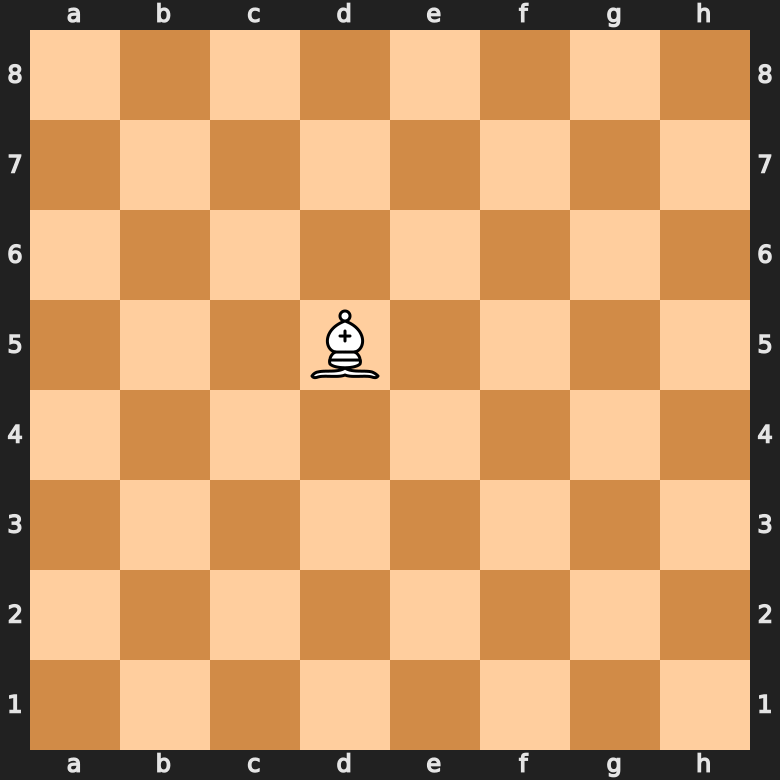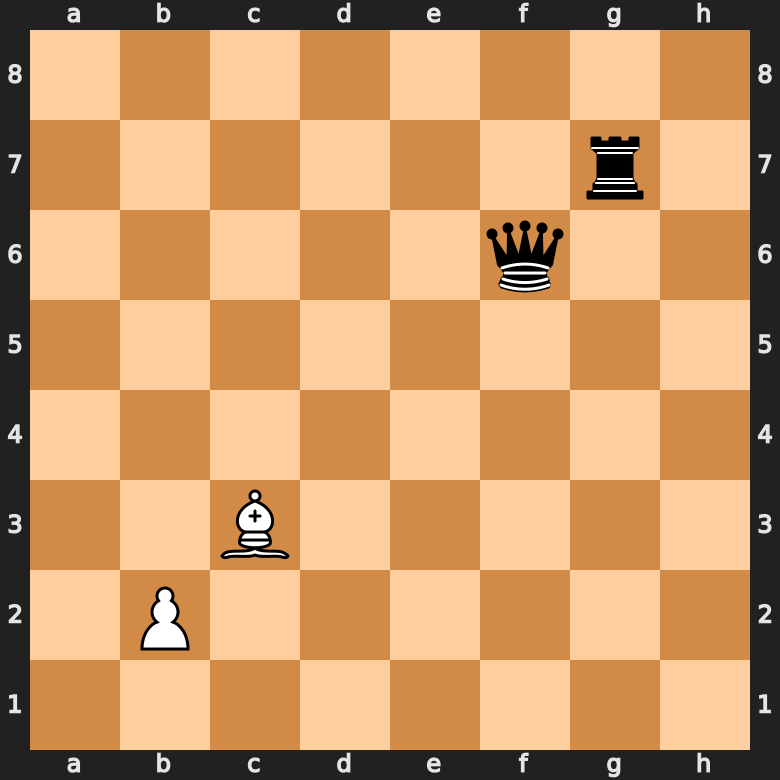How Does The Knight Move In Chess?
The bishop is one of two minor pieces in chess (the other being the knight). He is a valuable strategic asset, thanks to his long-range attacking capabilities. But before you can master the bishop, we need to explain how the bishop moves and attacks in chess. Let’s go!
Bishops Move in Diagonal Lines
The rules of chess state: The bishop can move any number of vacant squares, in any diagonal direction in a straight line. Luckily, the bishop is not a very complicated piece; he doesn’t have any special moves you need to remember.
If you’re having trouble imagining the bishop’s movement across an empty chess board, have a look at this animation:

While most of the chess pieces can move diagonally, the bishop is the undefeated master of this ability. He is the only one that can only move diagonally!
Due to the diagonal movement of the bishop, each player has one light-squared bishop and one dark-squared bishop. Meaning, bishops cannot change the color of squares that they move along. The bishop starting on the light squares will remain on them for the rest of the game; the same goes for the bishop starting on the dark squares.
How Does The Bishop Attack in Chess?
The bishop is notorious for being a deadly attacking force. If you give him an open diagonal, he will be a valuable asset, sniping down enemy positions from far back.
Just like all other pieces in chess (except the pawn), the bishop attacks in the same way it moves. Meaning, enemy pieces that stand on a bishop’s diagonal, are under attack. Similarly, any friendly pieces placed on a bishop’s diagonal are protected by said bishop.
Bishops Love Skewers
One attacking move the bishop excels at, is the skewer. A skewer is defined as an attack upon two pieces that are placed in a line.
Have a look at this position and see if you can make out why Black is in big trouble here:

The white bishop attacks the queen, with a black rook right behind her. Whatever Black does, he loses material in the exchange:
- If Black captures the white bishop, the queen gets recaptured by the pawn on b2
- If Black moves the queen out of the way, the white bishop can capture the rook on g7
- If Black does nothing, White can capture the queen with the bishop on c3
This is why skewers are so powerful. Due to their relatively low value, skewers with bishops are especially dangerous, as capturing the attacking bishop is a bad exchange.
What The Bishop Can’t Do
Unfortunately, the bishop is not omnipotent in chess. He does face some restrictions in terms of movement. Some of them are specific to the bishop itself; others are general limits to the way chess pieces can move on the board.
Limits to the Movement of Chess Pieces:
- The bishop cannot move in “half squares”. Every chess piece needs to stand firmly on a single square at the end of each move. It is not possible for the bishop to stand in-between two or more squares, meaning he can’t move “half squares” on the chess board.
- Sharing squares with other pieces is also not allowed for the bishop. Another restriction all chess pieces face, is the inability to share squares on the chess board. For example, it is not allowed for the bishop to stand on a square together with a king. This goes for both friendly and enemy pieces, the latter of which need to be captured before being able to move to said square.
Moves The Bishop in Particular Can’t Do:
- The bishop has to move in straight, diagonal lines. The bishop always has to move in straight lines, meaning he can’t suddenly change direction during a move. The result are straight, diagonal lines along the chess board.
- The rook can’t move vertically or horizontally. The bishop is the only piece in chess, that can only move diagonally. Meaning, it is impossible for him to move horizontally or vertically (up or down / left or right).
- The bishop is not allowed to jump over other pieces. This should be no surprise to you, but the bishop is also not allowed to jump over friendly or enemy pieces. The only chess piece allowed to do so is the knight.

